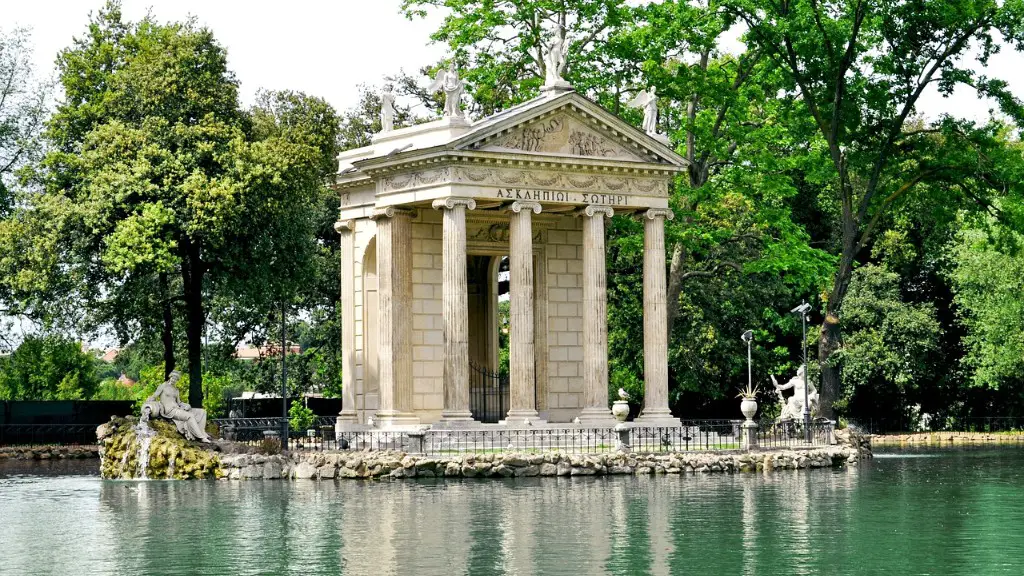Purple’s long legacy
The history of purple stretches back to ancient Rome, where the intricate process of gaining the color was restricted to the wealthy. As such, wearing or using purple prompted a unique kind of association with luxury and grandeur. It was this colorful past that was used to interweave purple into the fabric of early Roman culture.
Ancient Rome was a deeply hierarchical society, and the use of purple was restricted for the upper classes. This color became a mark of authority, wealth and honor. Roman men were known to often wear purple togas and cloaks as a sign of higher status. Similarly, women would take to wearing signs of purple too, demonstrating their level of luxury and affluence.
The wearing of purple was even regulated to the extent that only noble families could don purple togas. In some instances, the wearing of purple in public was even forbidden by law, making the very wearing of it a symbol of power. By extension, this meant that in some special occasions, purple was not enough to portray the highest status; having a unique dye was seen as a mark of royalty.
This exclusive association also extended to religion. During the early years of the Roman empire, the people would make offerings of purple to the gods in prayer. Products such as cloth and tools made with the color were presented in religious ceremonies as a symbol of respect, love, and offering. Such was the cultural significance of purple in Rome.
Several centuries later, these practices remain alive and influential. Purple remains one of the most popular colors in Roman society and culture, with its distinct features making it a sign of grandeur, luxury, and power. In modern Roman culture, purple is still used by those of a higher class, often to show off their wealth and brilliance.
Purple–Religious Symbolism
In early Roman culture, purple was often reserved for religious ceremonies. Priests and other venerated spiritual figures would often make offerings of cloth, fabric and other items dyed in purple – signifying their respect for the gods. Purple was also associated with honor, respect, and esteem with the use of this royal color limited to only the most honorable and sacred of occasions.
One of the earliest examples of this religious tradition can be traced back to the 4th century BC. During this time, it is believed that the Romans used purple in the worship of the goddess Juno. In this particular instance, it is believed that purple was associated with the idea of protection and security.
The significance of purple in religious ceremonies extended to other religions too. In fact, ancient stories and legend tell of merchants who would seek out distant places to acquire the rare color, only to be offered it by a priest in exchange for worshiping him. This is just one example of how purple was imbued with spiritual symbolism in ancient Rome.
It was not just purple that was used in religious ceremonies; other colors too held a special and symbolic place in Roman tradition. For example, red was used to honor Jupiter, and white was employed to invoke the deities of the underworld. These varied hues were all part of the extensive backdrop of Latin culture and society.
Purple–A Financial Symbol
The ancient Roman economy was based heavily on the trading and acquisition of dyes, such as that of purple. The process of making the color was elaborate and complex, taking a great deal of labor and money to manufacture. As a result, purple dyes were extremely expensive, and their production was regulated to the privileged few.
The use of purple in Roman economics was so significant that it even formed a form of currency in some instances. Wealthy aristocrats and merchants used the color purple as a sign of wealth and excess, a key element of the Roman financial system, and an essential part of the social system.
The ‘purple merchants’ of the Roman empire were individuals who specialized in the harvesting and selling of purple dyes. They traveled to distant parts of the world in search of new sources of the dye, often selling their wares to the wealthy. This newfound financial opportunity allowed purple to become a symbol of wealth and social status.
However, the purple merchants of Rome were not the only ones to benefit from the acquisition and sale of purple. In addition to the merchants, the religious class also profited from the sale and use of the color. Purple was renowned for having a spiritual and divine resonance, making it an attractive symbol for Romans of all classes.
Purple -Retaining Relevancy
The association of purple with wealth and luxury has endured for centuries, retained in the culture and society of Rome. In modern Rome, purple is still seen as a symbol of status and status-qualifying features such as the owning of a car or a house. It is also used in official occasions such as weddings, and is often seen in several of Rome’s most popular attractions.
Purple is also associated with luxurious items such as jewelry, expensive garments and furniture. Clothing, accessories and décor made of or incorporating this shade of color is a common sight in theRoman fashion and home decorations circles. Certainly, these products exude the same sense of grandeur and extravagance that purple had in ancient Rome.
Additionally, purple is a favorite color among celebrities and politicians, who often use it to express their power, confidence and higher social standing in modern-day Rome. This further underlines its connection to luxury, wealth, and power – characteristics that were intrinsic to the Roman society.
Though opinions on the use of the color may have changed over time, its lasting cultural significance has remained consistent throughout the centuries. In conclusion, the importance of purple in the Roman culture cannot be understated.
Purple–The Imperial Color
Purple was used to signify power and strength in the early Roman empire. Roman rulers would often wear garments and accessories of the hue to emphasize their authority. It was also a color used to signify the earning of certain accolades, honors, and decorations, such as the coveted imperial purple robe.
The royal purple robe was first awarded to an Emperor in AD 97, when the Roman Emperor Nerva was presented with the garment as a sign of respect. The awarding of the robe to the emperor from then on was a signal of his absolute power, and it was often used to signal his entrance into a room. The awarding of the robe was a powerful demonstration of imperial strength, and it was a prestigious achievement that was highly sought after by the ruler.
Purple was also used to denote other aspects of the imperial family, such as the color of a wreath or crown worn by the emperor. In these cases, the wearing of purple was of even greater honor and proclaimed the family’s achievements to the people. It was also used to decorate chariots, a sign of power and luxury, or even to denote Roman customs.
The wearing of purple in ancient Rome served many purposes and was a testament to the power, strength and prestige of the Roman empire. Its connections with the imperial family, authority, and the ancient gods demonstrates its lasting cultural power, one that has endured for centuries.
Purple–Color of Luxury
The Ancient Romans had a strong attachment to color, and purple was an unmistakable representation of luxury and wealth. Dyes to produce the color were extremely expensive and fascinating to the Ancient Roman people.
In Ancient Rome, purple was seen as one of the colors of power and status. It was only elites of the elite – namely, royals, government officials, and high-ranking priests – who could afford to wear clothes of this color or have items of similar hues, or even consume purple-dyed food and drink.
The use of purple even went beyond mere individual use and was adopted by certain Roman institutions and businesses that wanted to indicate their wealth to the public. Several forums and temples, including the Foro Romanum, were decorated with the vibrant color to symbolize the wealth and grandeur that they represented.
In addition to this, various foods such as grapes and milk, were also dyed with purple to reflect the wealth associated with the food item. This was a practice that was considered only for the elite, as the common person would rarely have access to the ingredients necessary for this task.
It is clear that the Ancient Roman people had a profound respect for and appreciation of the color. The intricate process of acquiring the dye, in addition to its scarcity, further speaks to purple’s special place in the ancient Roman culture.
Purple–The Final Touch
The need of Ancient Rome to enhance their looks and appear more wealthy in the eyes of the public gave birth to the use of purple as an accessory. When putting together an outfit, purple was the final touch that gave someone an edge in terms of their appearance. It was an indicator of one’s wealth, status and power.
The color was seen by the Romans as a way to add flair to an outfit. While it was not always the main component, purple was used as a way to tie an outfit together, from jewelry to shoes. It was this subtle attention to detail that were used to communicate one’s wealth and status to the outside world.
In addition to this, the color purple was also used in the beauty industry. This was a practice employed mainly by wealthy Roman women, who would use the hues to develop certain tones to their skin and hair. This allowed them to stand out and portray their beauty, wealth, and status in society.
In conclusion, the people of ancient Rome had a strong affinity for purple, using it as an accessory to communicate their social standing to the world. In this way, the color’s legacy continues to live on today, with it still being used to communicate power, wealth, and luxury.





